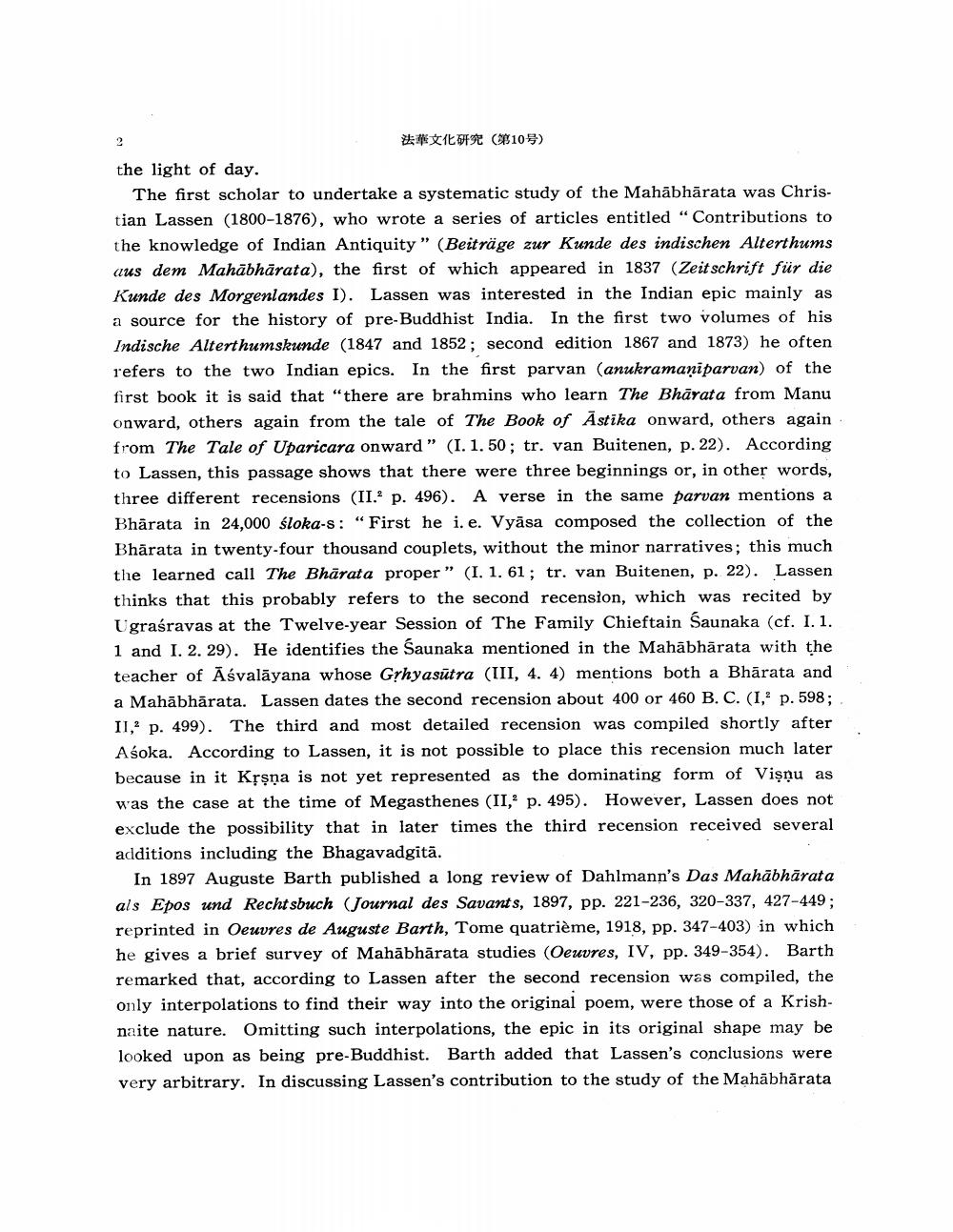Book Title: Study Of Mahabharata Author(s): J W De Jong Publisher: J W De Jong View full book textPage 2
________________ It R (810) the light of day. The first scholar to undertake a systematic study of the Mahabharata was Christian Lassen (1800-1876), who wrote a series of articles entitled "Contributions to the knowledge of Indian Antiquity" (Beiträge zur Kunde des indischen Alterthums aus dem Mahābhārata), the first of which appeared in 1837 (Zeitschrift für die Kunde des Morgenlandes I). Lassen was interested in the Indian epic mainly as a source for the history of pre-Buddhist India. In the first two volumes of his Indische Alterthumskunde (1847 and 1852; second edition 1867 and 1873) he often refers to the two Indian epics. In the first parvan (anukramaniparvan) of the first book it is said that "there are brahmins who learn The Bhārata from Manu onward, others again from the tale of The Book of Astika onward, others again from The Tale of Uparicara onward” (I. 1.50; tr. van Buitenen, p. 22). According to Lassen, this passage shows that there were three beginnings or, in other words, three different recensions (II. p. 496). A verse in the same parvan mentions a Bhārata in 24,000 śloka-s: "First he i. e. Vyāsa composed the collection of the Bhārata in twenty-four thousand couplets, without the minor narratives; this much the learned call The Bhārata proper" (1. 1. 61; tr. van Buitenen, p. 22). Lassen thinks that this probably refers to the second recension, which was recited by Ugraśravas at the Twelve-year Session of The Family Chieftain Saunaka (cf. I. 1. 1 and I. 2. 29). He identifies the Saunaka mentioned in the Mahābhärata with the teacher of Āśvalāyana whose Grhyasūtra (III, 4. 4) mentions both a Bhärata and a Mahābhārata. Lassen dates the second recension about 400 or 460 B. C. (1, p. 598; 11, p. 499). The third and most detailed recension was compiled shortly after Asoka. According to Lassen, it is not possible to place this recension much later because in it Krşna is not yet represented as the dominating form of Vişnu as was the case at the time of Megasthenes (II, p. 495). However, Lassen does not exclude the possibility that in later times the third recension received several additions including the Bhagavadgitā. In 1897 Auguste Barth published a long review of Dahlmann's Das Mahābhārata als Epos und Recht sbuch (Journal des Savants, 1897, pp. 221-236, 320-337, 427-449; reprinted in Oeuvres de Auguste Barth, Tome quatrième, 1918, pp. 347-403) in which he gives a brief survey of Mahābhārata studies (Oeuvres, IV, pp. 349-354). Barth remarked that, according to Lassen after the second recension was compiled, the only interpolations to find their way into the original poem, were those of a Krishnaite nature. Omitting such interpolations, the epic in its original shape may be looked upon as being pre-Buddhist. Barth added that Lassen's conclusions were very arbitrary. In discussing Lassen's contribution to the study of the MahābhārataPage Navigation
1 2 3 4 5 6 7 8 9 10 11 12 13 14 15 16 17 18 19
